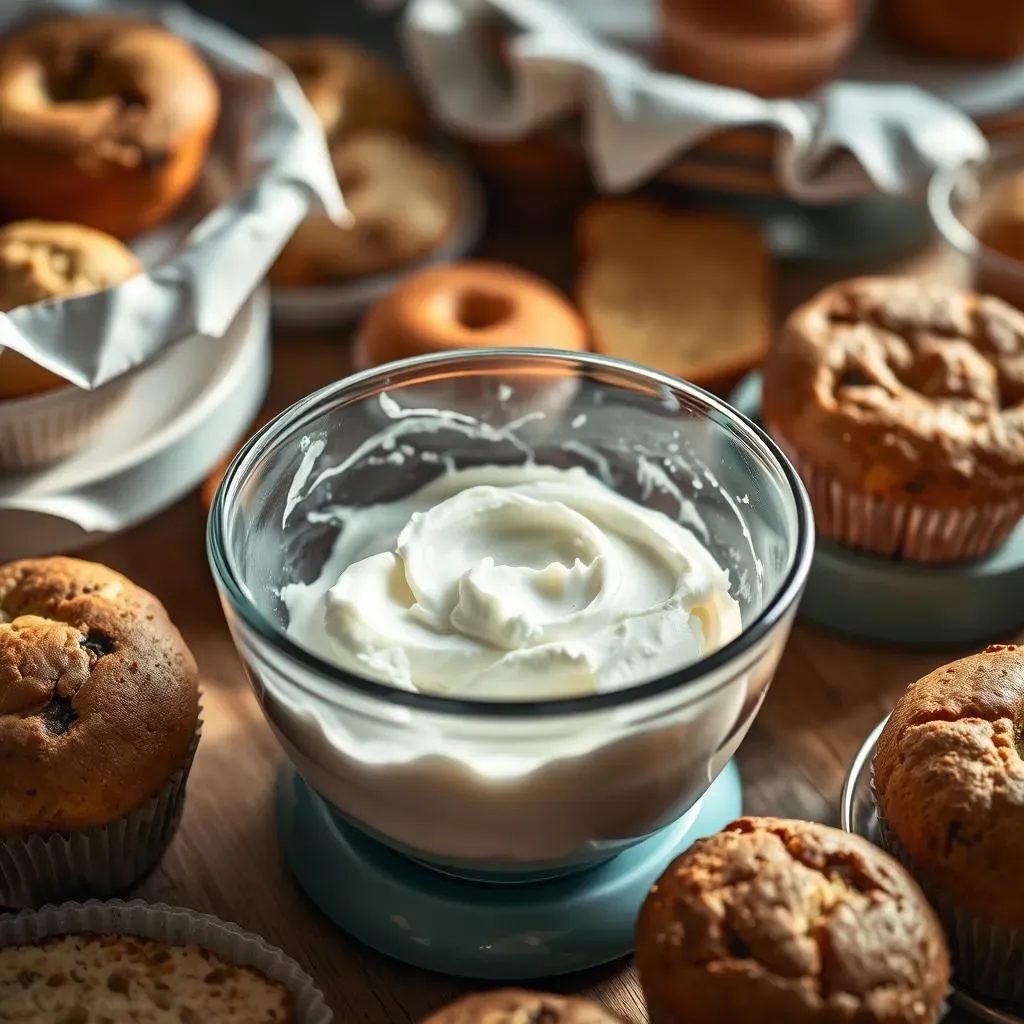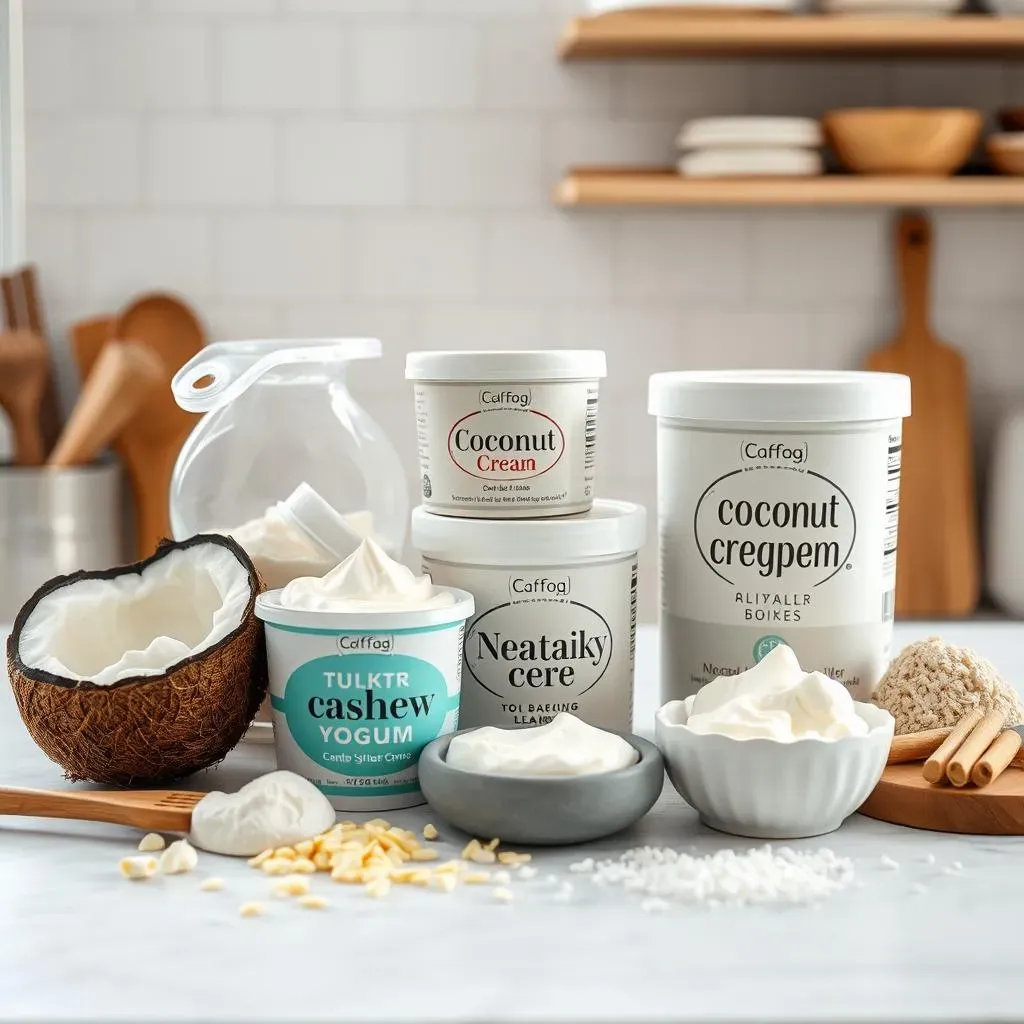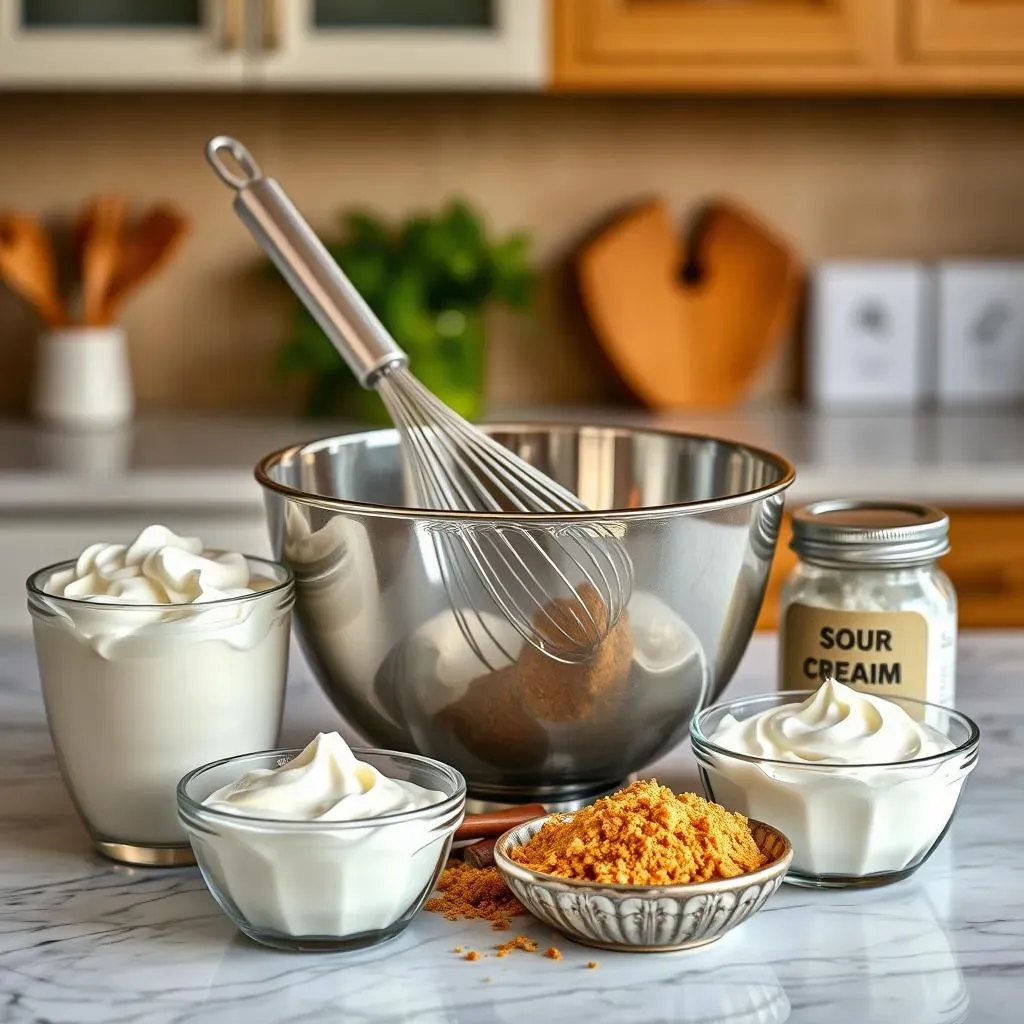Table of Contents
Ever found yourself mid-recipe, ready to bake, only to discover you're fresh out of sour cream? It's a baking buzzkill, I know. That tangy, creamy goodness seems irreplaceable, right? But hold on, don't abandon that cake just yet! The good news is that there are plenty of fantastic options for when you're wondering, "what is the substitute for sour cream in baking?". This article is here to be your guide through the wonderful world of sour cream alternatives. We'll explore why sour cream is so important in baking, and then we'll get into the nitty-gritty of the best dairy and non-dairy swaps, and how to use them. We'll also discuss how to pick the right one for your specific baking needs. Get ready to become a master of substitution, making sure no baking project is ever derailed by a missing dollop of sour cream.
Understanding Sour Cream's Role in Baking

Understanding Sour Cream's Role in Baking
The Tangy Magic of Sour Cream
Okay, so you might be thinking, "Sour cream? What's the big deal?" Well, it's not just a dollop on your baked potato. In baking, sour cream is like a secret weapon. It brings a unique tanginess that balances out sweetness, preventing your cakes and muffins from being one-note sugar bombs. That slight sour flavor is crucial, making your baked goods taste more complex and interesting. Think about it, without that little zip, things can get pretty boring, right?
Beyond the flavor, sour cream adds moisture. It's not just liquid; it's a creamy, rich liquid that keeps baked goods from becoming dry and crumbly. We all know the disappointment of a dry cake, and sour cream is a key player in avoiding that disaster.
Why Texture Matters
It's not just about taste; texture is a huge part of why we love certain baked goods. Sour cream contributes to a tender crumb in cakes and muffins. It achieves this by interfering with the development of gluten, which can sometimes make baked goods tough. This is why your favorite moist, tender recipes likely have sour cream lurking in the ingredient list. It's the unsung hero behind that perfect texture.
Sour cream also adds richness, that "melt-in-your-mouth" quality that makes a treat truly decadent. It's the secret ingredient that elevates simple recipes and makes them feel special. So, when we're looking for a substitute, we have to keep all these roles in mind.
More Than Just a Topping
Now, it’s easy to think of sour cream as just a topping for tacos, but in baking, it's a crucial ingredient that plays multiple roles. It’s not just about flavor, it’s about creating that perfect balance of taste and texture. When you’re swapping it out, you have to consider all these factors. It’s not as simple as grabbing any old creamy thing from the fridge.
So, next time you see sour cream in a recipe, don’t underestimate its importance. It’s the quiet achiever that makes a big difference in the final product. Now, let’s get to the fun part: finding some killer substitutes!
Top Dairy Substitutes for Sour Cream in Baking

Top Dairy Substitutes for Sour Cream in Baking
Greek Yogurt: The MVP
Alright, let's talk about the star of the show when it comes to dairy swaps: Greek yogurt. This stuff is a lifesaver, seriously. It's thick, it's tangy, and it’s readily available in most grocery stores. It's the closest thing you'll find to sour cream, and it works like a charm in almost any baking recipe. When I first started baking more, I was amazed at how well it performed. The texture is spot on, and that little tang is just what you need to balance out all the sweetness. It's like sour cream’s healthier, more protein-packed cousin.
Now, you might be thinking, "Okay, but how do I use it?" It’s simple. For most recipes, you can do a straight one-to-one swap. If your recipe calls for one cup of sour cream, use one cup of Greek yogurt. It's that easy. Just make sure you're using plain, unsweetened Greek yogurt. The flavored stuff will mess with the taste and sweetness of your recipe. And, if you find your yogurt is a bit too thick, you can thin it out with a tiny splash of milk or water.
Other Dairy Contenders
While Greek yogurt is the clear winner, there are other dairy options you can use in a pinch. Let's talk about them. First, there’s crème fraîche. This is a French product that’s similar to sour cream but a bit richer and thicker. It has a lovely tang, and it works really well in baking, especially if you’re looking for a super-rich flavor. Then we have buttermilk. It's thinner than sour cream, but it still has that signature tang. It's great for adding moisture to baked goods, but you might need to adjust the amount of liquid in your recipe if you use it. Lastly, for a very similar texture, you can use full fat cottage cheese. You must blend it first to get it smooth and creamy, but the results are great. It’s a good way to add a bit of protein to your baked goods too!
Each of these substitutes has its own unique characteristics, and they all work well in specific situations. For example, I once used crème fraîche in a lemon cake, and it was heavenly – so rich and flavorful. The key is to understand their differences and choose the one that best fits your recipe and your taste preference. Just don't be afraid to experiment a little; baking should be fun, right?
Dairy Substitute | Best Use | Notes |
|---|---|---|
Greek Yogurt | Most recipes, cakes, muffins, dips | Use plain, unsweetened, can thin with milk |
Crème Fraîche | Rich cakes, sauces | Richer and thicker than sour cream |
Buttermilk | Cakes, muffins | Thinner, may need liquid adjustment |
Cottage Cheese | Cakes, muffins | Blend until smooth, adds protein |
NonDairy Alternatives When Baking Without Sour Cream

NonDairy Alternatives When Baking Without Sour Cream
Coconut Cream: The Rich & Creamy Option
Okay, so maybe dairy isn't your thing, or you've got some dietary restrictions. No sweat! Coconut cream is here to save the day. This stuff is seriously thick and rich, making it a fantastic substitute for sour cream in baking. It's not just for curries, you know! The key here is to use the thick cream from the top of a can of full-fat coconut milk that has been chilled. Don't shake the can, just scoop out the thick stuff, leaving the watery liquid behind. This will give you that creamy texture that's essential for baking.
Coconut cream adds a subtle coconut flavor, which can be a great addition to certain recipes, like cakes or muffins with tropical flavors. I once made a coconut-lime cake using coconut cream, and it was a total hit! Just keep in mind that it does have a distinct taste, so it might not be the best choice if you're looking for a totally neutral flavor. However, if you’re into that hint of coconut, then you're in for a treat!
Other Non-Dairy Wonders
Beyond coconut cream, there are other non-dairy options that work well as sour cream substitutes. Let's talk about a few. First, there’s cashew cream. It is made by soaking raw cashews in water, then blending them until smooth. It creates a very creamy, neutral-tasting base that's great for baking. Another option is silken tofu. Yes, tofu! This stuff is surprisingly versatile. When blended, it becomes incredibly smooth and creamy, and it can be used in both sweet and savory recipes. Just make sure you drain it well before blending.
Also consider plant-based yogurts. There are tons of options these days, from almond to soy to oat. Look for plain, unsweetened varieties, and choose the one that best matches the flavor profile of your recipe. Plant based yogurts can vary in thickness, so you might need to adjust the quantity to get the right consistency. Remember, when using any of these substitutes, it’s all about experimenting and finding what works best for you. Don't be afraid to try things out and see what magic you can create!
Non-Dairy Substitute | Best Use | Notes |
|---|---|---|
Coconut Cream | Cakes, muffins, tropical flavors | Use thick cream from chilled can |
Cashew Cream | Most recipes, neutral flavor | Soak cashews before blending |
Silken Tofu | Cakes, muffins, both sweet and savory | Drain well before blending |
Plant-Based Yogurts | Most recipes, versatile | Use plain, unsweetened, adjust quantity |
How to Choose the Right Sour Cream Substitute for Your Baking Needs

How to Choose the Right Sour Cream Substitute for Your Baking Needs
Considering Flavor Profiles
Alright, so you’ve got all these options, but how do you pick the right one? It all comes down to what you’re baking and what flavors you’re going for. If you want something that’s a dead ringer for sour cream, go with Greek yogurt. It’s got that tangy flavor and creamy texture that’ll work in almost any recipe. But if you’re after something a little different, consider coconut cream or cashew cream. Coconut cream adds a subtle tropical twist, while cashew cream is super neutral, making it a blank canvas for your flavors. Think about the other ingredients in your recipe and how the substitute will play with them. For example, if you're making a lemon cake, the tang of Greek yogurt or crème fraîche will enhance the lemon flavor. But if you're making a chocolate cake, you might prefer the neutral flavor of cashew cream or silken tofu. It's all about creating a flavor harmony that tickles your taste buds.
Also, think about how strong you want the substitute's flavor to be. Some, like coconut cream, have a very distinct taste that will come through in your baked goods. Others, like silken tofu, are more subtle and will blend in more easily. Consider what kind of flavor you want to highlight in your recipe, and then choose the substitute that will help you achieve that. It's like being a flavor architect, carefully choosing each ingredient to build the perfect taste experience. Don't be afraid to experiment a little. That's how you discover new favorites, and plus, it makes baking more fun!
Texture and Moisture Matters
Flavor is just one piece of the puzzle; texture is just as important. Sour cream adds moisture and tenderness to baked goods, so you need to pick a substitute that can do the same job. Greek yogurt, crème fraîche, and coconut cream are all great for adding moisture, thanks to their rich, creamy texture. If you’re using a thinner substitute, like buttermilk, you might need to reduce the amount of other liquids in your recipe to avoid a batter that’s too wet. Likewise, if you're using something like silken tofu or plant-based yogurt, which can be a bit thinner, you might want to use a bit less than the recipe calls for, or add a bit of a thickener, like cornstarch.
It’s also important to think about the overall texture you want to achieve. If you’re making a cake that needs to be light and fluffy, you might want to use a lighter substitute. If you’re making something denser and richer, a thicker substitute might be better. Check the consistency of your substitute before you add it to the batter, and adjust accordingly. A little bit of testing can go a long way. And remember, baking is all about having fun and learning as you go. So, don’t worry if things don’t turn out perfectly the first time. The important thing is to keep trying and learning.
Factor | Considerations | Examples |
|---|---|---|
Flavor | How strong do you want the substitute's flavor to be? Will it complement other flavors? | Greek yogurt (tangy), Coconut cream (tropical), Cashew cream (neutral) |
Texture | Do you need a thick, rich substitute or a lighter one? How will it affect moisture? | Crème fraîche (rich), Buttermilk (thin), Silken tofu (smooth) |
Dietary Needs | Do you need dairy-free or vegan options? | Coconut cream, Cashew cream, Plant-based yogurts |